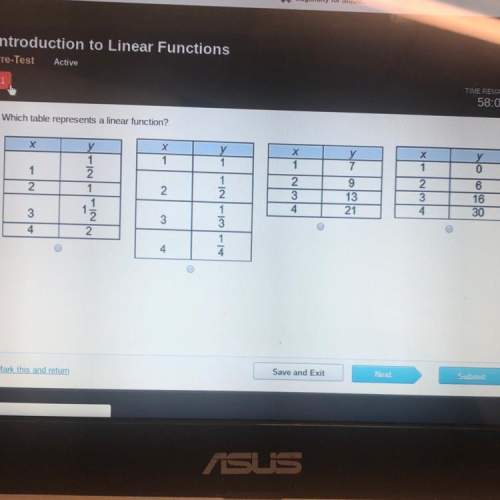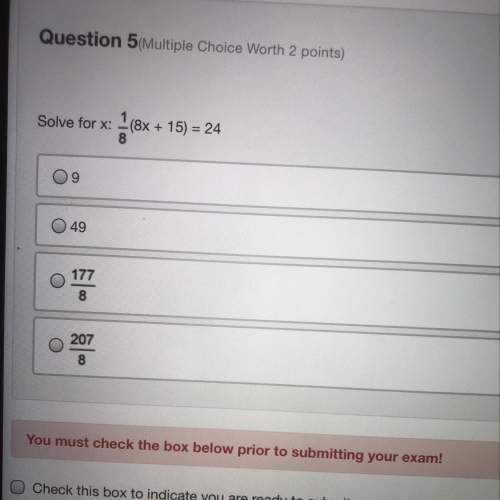15 20

Mathematics, 24.03.2020 23:08 sillslola816oxb5h7
1. Place the appropriate inequality in the blank to make a true statement.
15 20
Do the following to the original numbers each time.
Add 3 to each
15+3 20 +3
18 23
Divide by 5
15/5 20/5
3 4
Multiply by 3
15(3) 20(3)
45 60
Divide by -1
15/-1 20/-1
-15 -20
Multiply by -2
15(-2) 20(-2)
-30 -40
Explain what you discovered here.
2. Choose the correct solution and explain why you chose this answer. (The blue is shaded)
B. Lesson Content
3. Copy and paste all of the text inside the box starting with WHEN LESS IS…
4. Look at Video 2 above Practice. Copy the snowboarding problem and the answer to it.
C. Solve the following inequalities using set notation:
5. x – 12 > 2
6. -3x < 27
7. (x/6) < -5
8. x + 6 > - 10
9. 9x < -36
D. Interpret the following number lines by reviewing Types 1 through 5 in the lesson content.
10.
11.
12.
E. Write the following situations as inequalities in two ways as demonstrated in the opening LIVE recording and Examples 1 and 2 under Real-Life problems.
13. Alex wanted to buy a car and needed at least $6000.
14. Serena has at most $50 in her wallet to buy CDs.

Answers: 3


Another question on Mathematics

Mathematics, 21.06.2019 17:00
In tossing one coin 10 times, what are your chances for tossing a head? a tail? 2. in tossing one coin 100 times, what are your chances for tossing a head? a tail? 3. in tossing one coin 200 times, what are your chances for tossing a head? a tail? deviation = ((absolute value of the difference between expected heads and observed heads) + (absolute value of the difference between expected tails and observed tails)) divided by total number of tosses. this value should always be positive. 4. what is the deviation for 10 tosses? 5. what is the deviation for the 100 tosses? 6. what is the deviation for 200 tosses? 7. how does increasing the total number of coin tosses from 10 to 100 affect the deviation? 8. how does increasing the total number of tosses from 100 to 200 affect the deviation? 9. what two important probability principles were established in this exercise? 10. the percent of occurrence is the obtained results divided by the total tosses and multiplied by 100%. toss the coins 100 times and record your results. calculate the percent occurrence for each combination. percent head-head occurrence: percent tail-tail occurrence: percent head-tail occurrence:
Answers: 3

Mathematics, 21.06.2019 19:00
What are the solutions of the equation? 5z^2 + 9z - 2 = 0 a. 1, -2 b. 1, 2 c. 1/5, -2 d. 1/5, 2
Answers: 2

Mathematics, 21.06.2019 19:00
What is the expression in factored form? -20x^2 - 12x a. 4x(5x+3) b. -4x(5x-3) c. -4(5x+3) d. -4x(5x+3)
Answers: 2

Mathematics, 22.06.2019 02:10
The key on a road map has a scale factor of 1.5 inches = 50 miles. the distance between santa fe and albuquerque measures 7.5 inches. the distance between santa fe and taos is 0.75 inches. what is the actual distance between the cities?
Answers: 3
You know the right answer?
1. Place the appropriate inequality in the blank to make a true statement.
15 20
15 20
Questions

Mathematics, 23.07.2019 00:30

Mathematics, 23.07.2019 00:30

Mathematics, 23.07.2019 00:30




History, 23.07.2019 00:30

Biology, 23.07.2019 00:30

Social Studies, 23.07.2019 00:30









Social Studies, 23.07.2019 00:30






